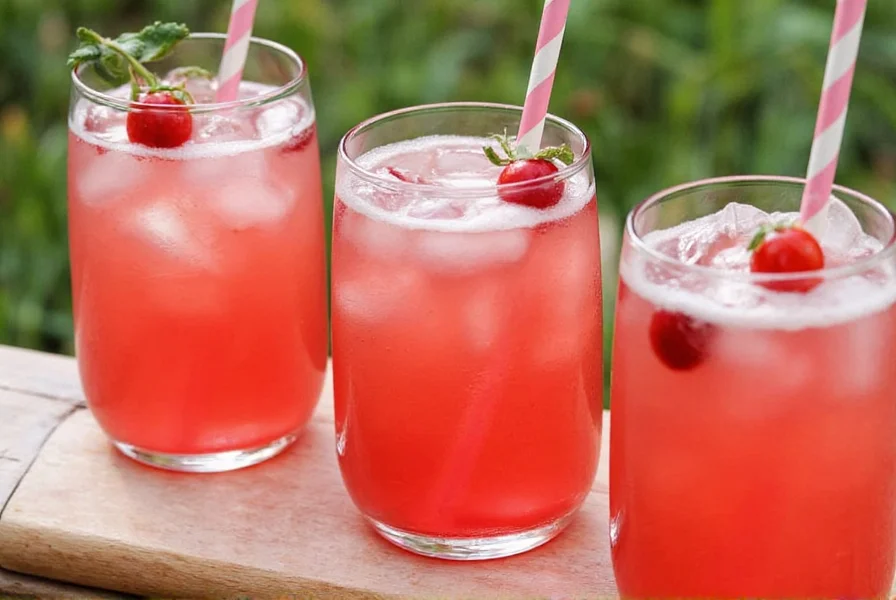Cranberry ginger ale has become increasingly popular as consumers seek flavorful yet non-alcoholic beverage options. This delightful drink merges two classic flavors into one harmonious beverage that satisfies multiple taste preferences simultaneously. Understanding its composition, preparation methods, and serving techniques can help you maximize enjoyment of this versatile drink.
The Origins of Cranberry Ginger Ale
The combination of cranberry and ginger represents a natural pairing of two ingredients with complementary flavor profiles. Cranberries, native to North America, have been used in beverages for centuries by indigenous peoples. Ginger, with its origins in Southeast Asia, has been prized globally for both culinary and traditional uses. The modern cranberry ginger ale fusion emerged as commercial ginger ales gained popularity in the late 19th and early 20th centuries, with home mixologists discovering the appealing contrast between tart cranberry and spicy ginger.
Key Components of Quality Cranberry Ginger Ale
Creating an exceptional cranberry ginger ale requires understanding its fundamental components:
| Component | Role in Beverage | Quality Indicators |
|---|---|---|
| Cranberry Element | Provides tartness and fruit flavor | Fresh juice preferred over sweetened blends; natural color |
| Ginger Element | Contributes spice and warmth | Real ginger flavor rather than artificial; balanced heat |
| Sweetener | Offsets tartness | Natural options like honey or maple syrup enhance complexity |
| Carbonation | Creates texture and mouthfeel | Proper level of fizz without overwhelming other elements |
Creating Homemade Cranberry Ginger Ale
While commercial cranberry ginger ale options exist, crafting your own version allows for complete control over ingredients and flavor balance. The basic process for making homemade cranberry ginger ale from scratch involves several straightforward steps that yield superior results compared to store-bought alternatives.
Simple Cranberry Ginger Syrup Recipe
This foundational recipe creates a versatile syrup that can be mixed with sparkling water to create fresh cranberry ginger ale whenever desired:
- Combine 2 cups fresh cranberries, 1 cup water, 1 cup sugar, and 1/4 cup freshly grated ginger in a saucepan
- Bring to a gentle simmer over medium heat, stirring occasionally
- Cook for 10-15 minutes until cranberries burst and mixture thickens slightly
- Strain through a fine mesh sieve, pressing gently to extract liquid
- Cool completely before storing in a sealed container in the refrigerator
To serve, mix 2-3 tablespoons of the syrup with 8 ounces of chilled sparkling water. Adjust the ratio based on personal sweetness preferences. This homemade cranberry ginger ale recipe produces a beverage with more complex flavors and fewer additives than most commercial versions.
Variations and Customization Options
One of the advantages of preparing cranberry ginger ale at home is the ability to customize it to suit different occasions and preferences. Consider these popular variations when exploring different cranberry ginger ale drink ideas:
- Spiced cranberry ginger ale - Add cinnamon sticks, cloves, or star anise during the simmering process
- Lime-enhanced version - Incorporate fresh lime juice for additional citrus notes
- Herbal infusion - Steep fresh mint, basil, or rosemary with the cranberry mixture
- Sparkling wine mixer - Use as a base for sophisticated non-alcoholic "mocktails"
Serving Suggestions for Cranberry Ginger Ale
Cranberry ginger ale serves as both a standalone beverage and a versatile mixer. For optimal enjoyment:
- Chill glasses before serving to maintain carbonation and temperature
- Add fresh cranberries or thin ginger slices as garnish
- Pair with savory appetizers like cheese platters or roasted nuts
- Use as a base for holiday-themed mocktails with additional fruit juices
- Try frozen into ice cubes for non-diluting chilling in other beverages
Nutritional Profile of Cranberry Ginger Ale
Understanding the nutritional aspects of cranberry ginger ale helps consumers make informed choices. A standard 8-ounce serving of homemade cranberry ginger ale typically contains:
- Approximately 120-150 calories (depending on sweetener amount)
- 30-35 grams of carbohydrates
- Natural antioxidants from cranberries
- Minimal fat and protein content
- Vitamin C from cranberry component
When comparing commercial cranberry ginger ale brands versus homemade versions, the latter generally contains fewer additives and preservatives while offering more control over sugar content. Those seeking lower sugar options can reduce sweetener amounts or use natural alternatives like stevia without significantly compromising flavor.
Storage and Shelf Life Considerations
Proper storage ensures maximum freshness and flavor retention. The cranberry ginger syrup component will keep for 2-3 weeks in the refrigerator when stored in a sealed container. For longer preservation, freeze the syrup in ice cube trays then transfer to freezer bags for up to 3 months. Commercial cranberry ginger ale should be consumed within 3-5 days after opening to maintain optimal carbonation and flavor.
Seasonal Adaptations for Year-Round Enjoyment
While cranberry ginger ale feels particularly appropriate for fall and winter holidays, creative adaptations make it suitable for any season. During warmer months, try serving it over extra ice with additional sparkling water for a lighter, more refreshing version. In spring, incorporate fresh strawberries or raspberries for a berry-forward variation. The versatility of this beverage ensures it remains a year-round favorite rather than just a seasonal specialty.











 浙公网安备
33010002000092号
浙公网安备
33010002000092号 浙B2-20120091-4
浙B2-20120091-4